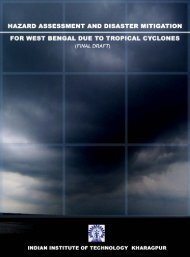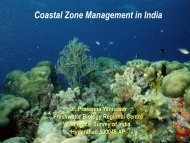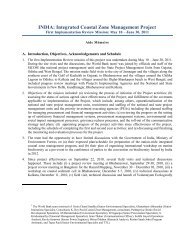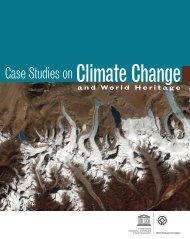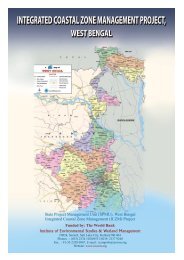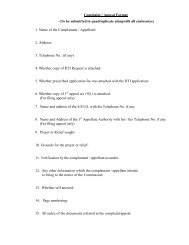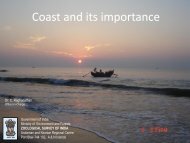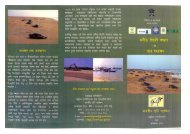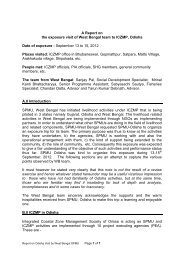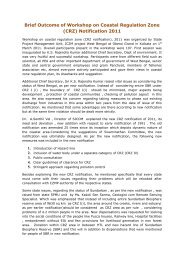integrated coastal zone management project west ... - Iczmpwb.org
integrated coastal zone management project west ... - Iczmpwb.org
integrated coastal zone management project west ... - Iczmpwb.org
You also want an ePaper? Increase the reach of your titles
YUMPU automatically turns print PDFs into web optimized ePapers that Google loves.
150market forces. The average economic return from agriculture per unit area may be less thanthat from aquaculture, but agriculture can keep a relatively large number of peopleemployed/engaged over at least half the year compared to the situation in case ofaquaculture. The choice is tricky as a large rural population having noengagement/employment but with money is always a potent social problem. Secondly, thereis considerable interest now created in the <strong>coastal</strong> areas especially on the <strong>west</strong>ern part of thestate in terms of development of coast based core industries including siting of large petrochemicalhubs. If these initiatives are to be realized in some form or other, perhaps large<strong>coastal</strong> agricultural land is to be acquired. People although will be compensated with an onetime payment but a large number of these people will loose their family-land and traditionallivelihood. It is uncertain how many of the present generation of the population will getemployment in the up-coming industries as new skill and entrepreneurship will be requiredin the industry and related opportunities in the service sector. These skills can not beacquired easily even with retraining facilities. A well researched ICZMP with in-built socialengineering solutions may perhaps provide answers to these potent livelihood conflicts.D.6.7 Climate Change and sea level rise122. Global climatic change induced by high concentration of carbon dioxide in theatmosphere that includes warmer climate, melting of glaciers, sea level rise, increase inincidences of tropical cyclonic storms, etc. are issues particularly relevant to Sundarban andother <strong>coastal</strong> areas of West Bengal. Amongst these, sea-level rise is the greatest threat andchallenge for sustainable adaptation within such area. A 45 cm rise in global sea levelswould lead to the destruction of 75 percent of the Sundarban mangroves. Along with globalsea level rise, there is a continuous natural subsidence in the Sundarban, causing a rise ofabout 2.2 mm per year. The resulting net rise rate is estimated at 3.1 mm per year at Sagar.The consequences in terms of flooding of low-lying deltas, retreat of shorelines,salinitisation and acidification of soils, and changes in the water table raise serious concernsfor the well being of the local population. Additional sources of stress, not related to climatechange, include the diversion of upstream freshwater inflow of the Ganges by the FarrakaBarrage in India since 1974 to alleviate the rapid siltation in the port of Kolkata. Jointly, thesea level rise and lower freshwater flow in winter will also result in increased salinity in thearea, threatening the conservation of the Sundarban mangroves. The issues of climatechange, therefore, constitute one of the major challenges of the 21st century and call for an<strong>integrated</strong> approach to issues of environmental preservation and sustainable development.E. Key Learning from CMZ Activity






